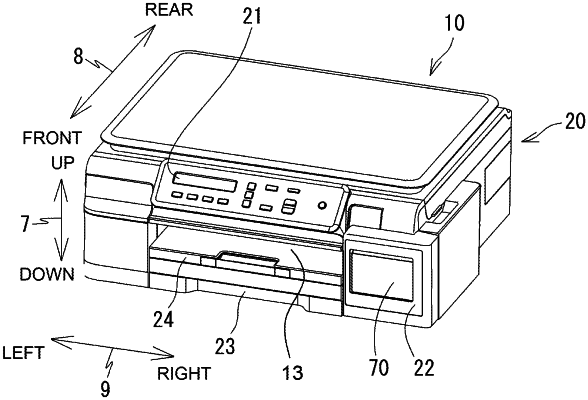| CPC B41J 11/00216 (2021.01) [B41M 5/0023 (2013.01); C09D 11/023 (2013.01); C09D 11/033 (2013.01); C09D 11/037 (2013.01); C09D 11/107 (2013.01); C09D 11/326 (2013.01)] | 19 Claims |

|
1. An ink discharging apparatus comprising:
a conveyor configured to convey a recording medium in a conveying direction;
a head configured to discharge the water-based ink for recording onto the recording medium conveyed by the conveyor; and
a heater which is located at downstream in the conveying direction of the head, and is configured to heat the recording medium or the water-based ink for recording adhered to the recording medium,
wherein the water-based ink for recording includes:
a resin-dispersed pigment,
resin fine particles of which glass transition temperature is not less than 33° C.
water, and
an organic solvent including a specific organic solvent of which saturation vapor pressure at 20° C. is not less than 0.03 hPa, and
the ink discharging apparatus satisfies the following condition (I):
 in the condition (I),
α (° C.) being the glass transition temperature of the resin fine particles, and
β (J/cm2) being an irradiation energy, radiated from the heater, per unit area of the recording medium, and being expressed by multiplying an electric power density (W/m2) of the heater with an irradiation time of the heater.
|